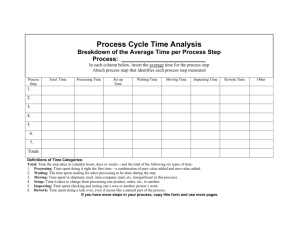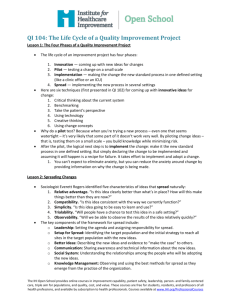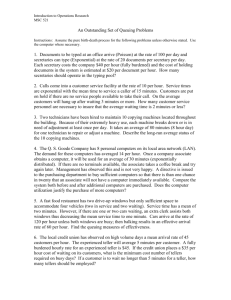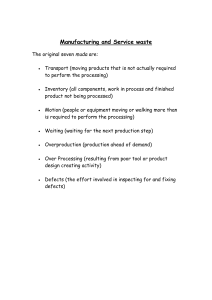Flow Chart for Using Health Cards in a Clinical
advertisement
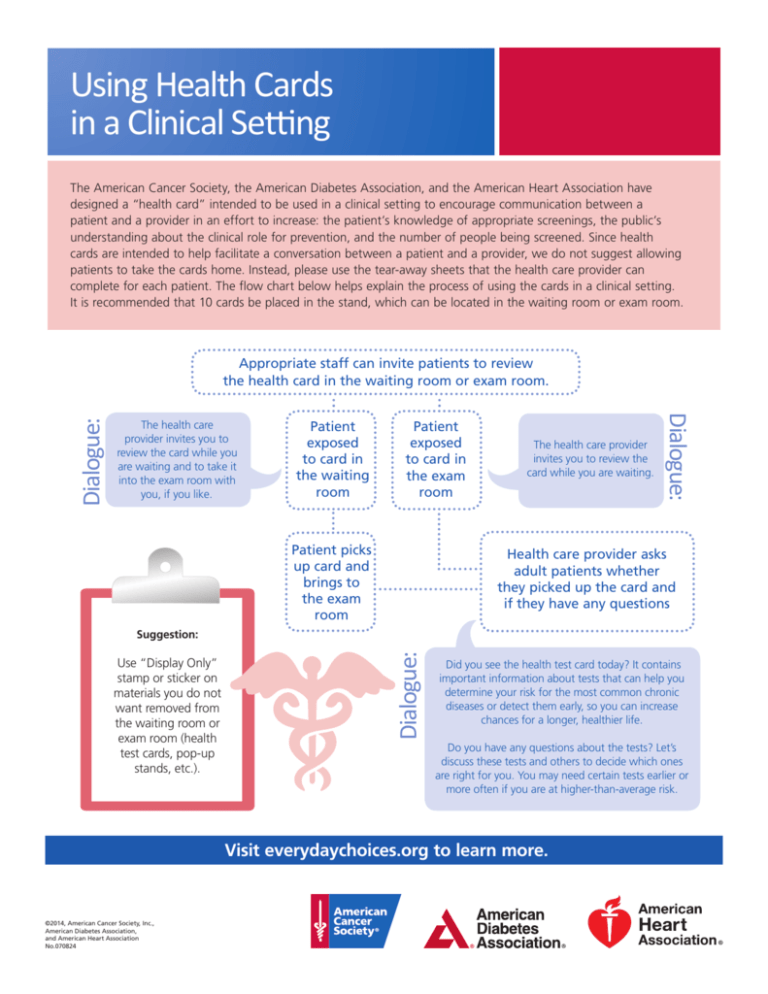
Using Health Cards in a Clinical Setting The American Cancer Society, the American Diabetes Association, and the American Heart Association have designed a “health card” intended to be used in a clinical setting to encourage communication between a patient and a provider in an effort to increase: the patient’s knowledge of appropriate screenings, the public’s understanding about the clinical role for prevention, and the number of people being screened. Since health cards are intended to help facilitate a conversation between a patient and a provider, we do not suggest allowing patients to take the cards home. Instead, please use the tear-away sheets that the health care provider can complete for each patient. The flow chart below helps explain the process of using the cards in a clinical setting. It is recommended that 10 cards be placed in the stand, which can be located in the waiting room or exam room. The health care provider invites you to review the card while you are waiting and to take it into the exam room with you, if you like. Patient exposed to card in the waiting room Patient exposed to card in the exam room Patient picks up card and brings to the exam room The health care provider invites you to review the card while you are waiting. Dialogue: Dialogue: Appropriate staff can invite patients to review the health card in the waiting room or exam room. Health care provider asks adult patients whether they picked up the card and if they have any questions Use “Display Only” stamp or sticker on materials you do not want removed from the waiting room or exam room (health test cards, pop-up stands, etc.). Dialogue: Suggestion: Did you see the health test card today? It contains important information about tests that can help you determine your risk for the most common chronic diseases or detect them early, so you can increase chances for a longer, healthier life. Do you have any questions about the tests? Let’s discuss these tests and others to decide which ones are right for you. You may need certain tests earlier or more often if you are at higher-than-average risk. Visit everydaychoices.org to learn more. ©2014, American Cancer Society, Inc., American Diabetes Association, and American Heart Association No.070824

